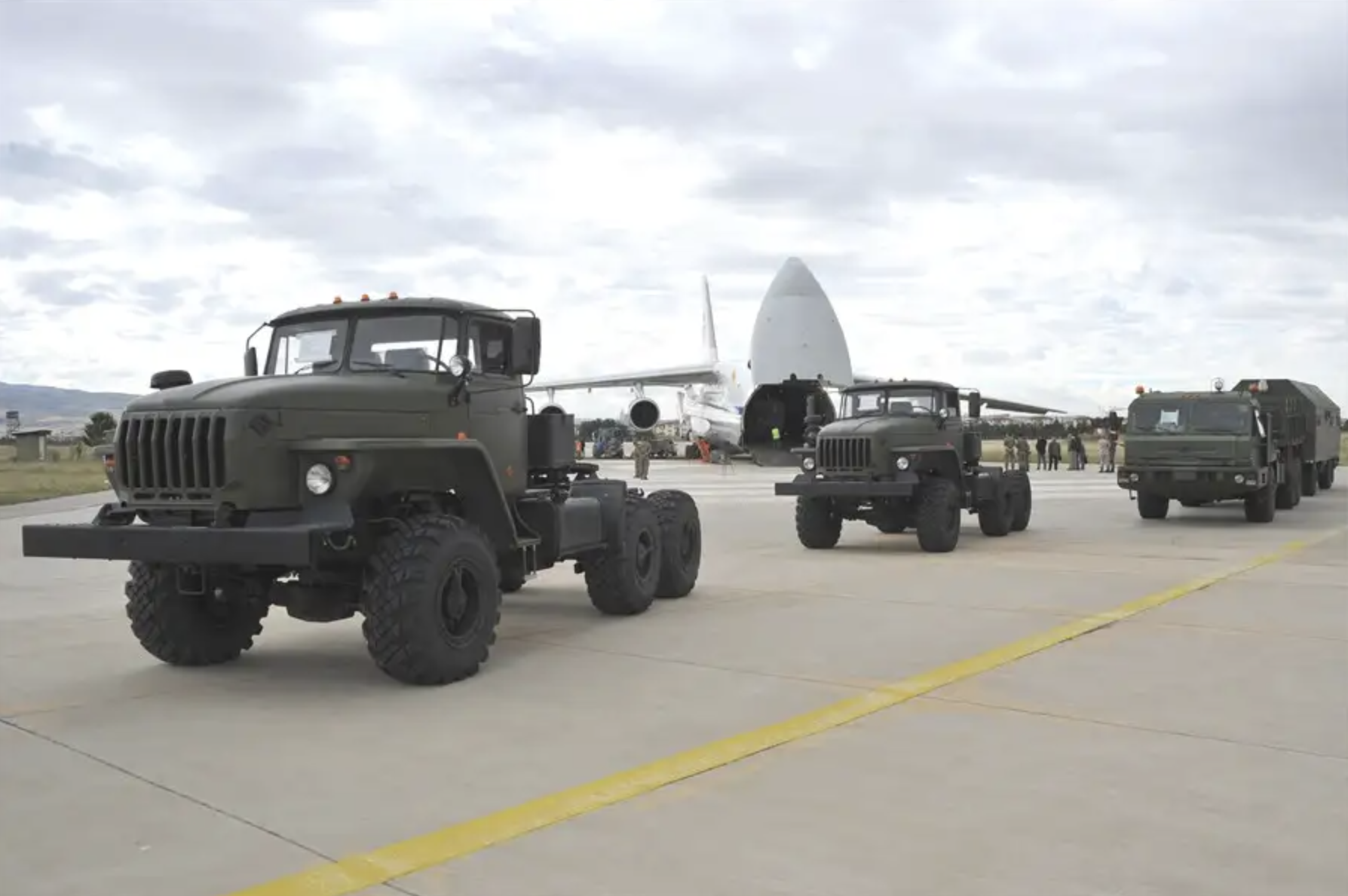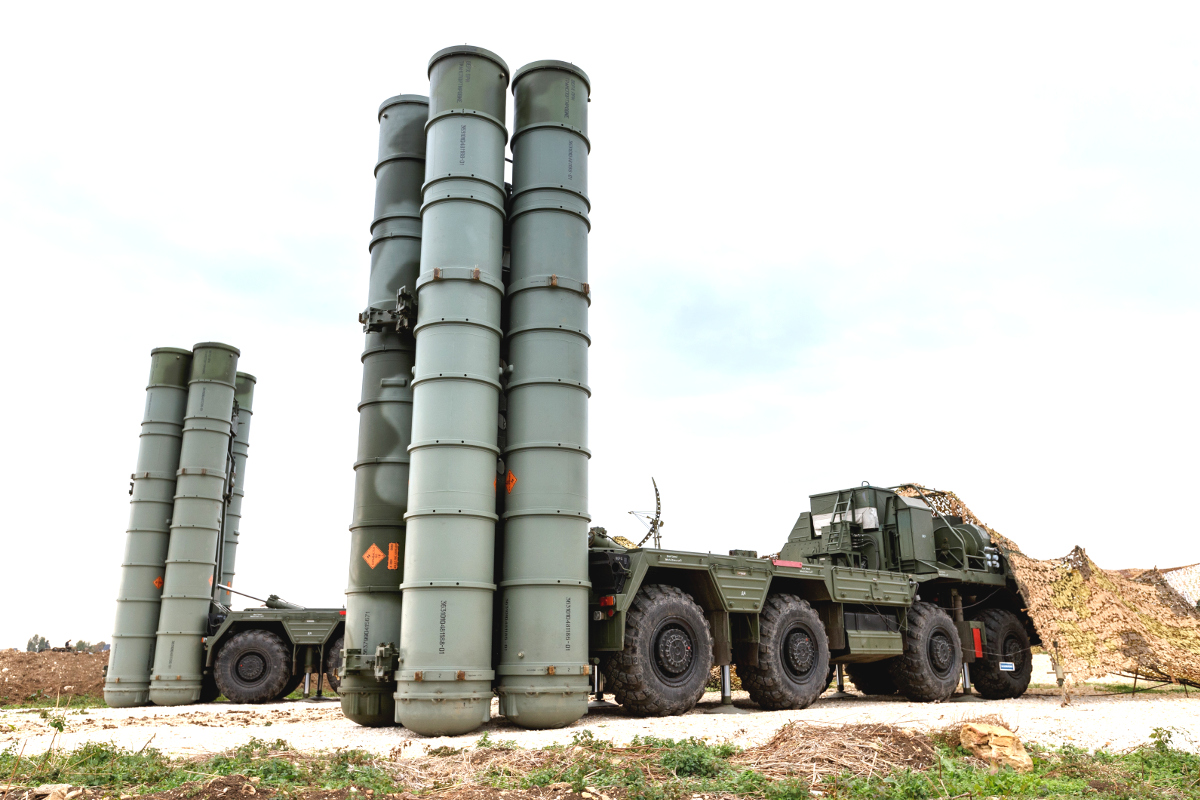The United States has slapped sanctions on the Turkish government’s top defense procurement and military-industrial arm over the country’s purchase of the Russian-made S-400 air defense system. As well as targeting important members of the country’s defense establishment, there are also provisions that could threaten Turkey’s ability to secure future defense-related exports from the United States.
A statement from the U.S. Secretary of State Mike Pompeo earlier today confirmed that the measures were being implemented under section 231 of the Countering America’s Adversaries Through Sanctions Act, or CAATSA. They are all directed against Turkey’s Presidency of Defense Industries, known by its Turkish acronym SSB. Among its duties, the SSB helps coordinate defense-related technology transfers and the delivery of foreign-made military hardware, as well as supporting and promoting the work of Turkish defense companies.

Pompeo said that the sanctions were in response to Turkey “knowingly engaging in a significant transaction with Rosoboronexport, Russia’s main arms export entity, procuring the S-400 surface-to-air missile.” The U.S. government has long criticized this purchase primarily as presenting a security risk to the F-35 Joint Strike Fighter program, asserting that it could provide the Kremlin with an avenue to acquiring sensitive information about that aircraft and its capabilities. This already led to Turkey being ejected from the F-35 program last year.
CAASTA, among its many sections, provides an automatic mechanism for placing second-order sanctions on third-party countries that engage with Russia’s defense sector, as a means of deterring them from doing so. It is worth noting that the law outlines certain circumstances under which the President can seek to waive these required sanctions.
Pompeo’s statement continues:
“The United States made clear to Turkey at the highest levels and on numerous occasions that its purchase of the S-400 system would endanger the security of U.S. military technology and personnel and provide substantial funds to Russia’s defense sector, as well as Russian access to the Turkish armed forces and defense industry. Turkey nevertheless decided to move ahead with the procurement and testing of the S-400, despite the availability of alternative, NATO-interoperable systems to meet its defense requirements. This decision resulted in Turkey’s suspension and pending removal from the global F-35 Joint Strike Fighter partnership.”
The first S-400 components began to arrive at Murted Air Base outside the Turkish capital Ankara on July 12, 2019, a process that you can read about here, and a first test-firing campaign for the new missiles reportedly took place last October.
What is currently unclear is why it took so long to trigger the CAASTA sanctions, considering the S-400 systems have been in Turkey for almost 18 months now, and this would normally be an automatic process. One explanation might be offered by U.S. Senator Chris Van Hollen, who released the following statement regarding the sanctions against Turkey, his office noting also that he had “repeatedly pressed the [Trump] administration to put these sanctions into place.” The emphasis in Van Hollen’s statement has been added:
“After watching President Trump repeatedly refuse to hold Turkey and President Erdogan accountable, I’m glad to see this administration finally impose these required sanctions — even if it was only under the imminent threat of further congressional action. These measures send a clear message to [Turkish President] Erdoğan: we will not allow him to undermine our national security and that of our faithful NATO allies without consequence. I will continue working to keep the pressure on Turkey to meet its obligations to the security of all members of the NATO Alliance.”
Whatever was the reason for the U.S administration dragging its feet, it has now made its move, although it is also worth noting that there were at least some behind-the-scenes efforts by U.S. officials to prevent certain arms transfers to Turkey in the interim.
As well as banning all U.S. export licenses to the SSB, the new sanctions also freeze the assets and place visa restrictions on the SSB President, Dr. Ismail Demir, together with selected other SSB officers.
Ankara was kicked out of the Joint Strike Fighter program beginning in July 2019, after its refusal to halt plans to acquire the S-400 from Russia. The process began with the removal of Turkish pilots from the F-35 training program in the United States, the barring of the country’s liaisons from the central Joint Program Office, and the first efforts to cut Turkish companies out of the international supply chain for the jets.

Seeking to distance the sanctions from its erstwhile NATO ally and plant the blame firmly on Moscow instead, today’s statement further notes that the United States “will not tolerate significant transactions with Russia’s defense and intelligence sectors,” while Pompeo also calls for Turkey “to resolve the S-400 problem immediately in coordination with the United States.”
With that in mind, the statement concludes by declaring that Turkey is a “valued ally and an important regional security partner for the United States,” and that the United States hopes to resume “productive defense-sector cooperation by removing the obstacle of Turkey’s S-400 possession as soon as possible.” Furthermore, the U.S. Department of State says that the sanctions are “not intended to undermine the military capabilities or combat readiness of Turkey or any other U.S. ally or partner, but rather to impose costs on Russia in response to its wide range of malign activities.”

As well as the problem of a NATO member helping support Moscow’s defense industry, U.S. officials also repeatedly raised their concerns about the threat to security posed by the Turkish S-400 acquisition. In particular, there was a fear that the F-35 — in service with the United States and close allies F-35 — could be compromised if operated by Turkey alongside the S-400s. Above all, it was suggested that sensitive details about the stealthy jet’s radar signature and other capabilities could be passed on to the Kremlin.
Specifically directed against Russia’s defense and intelligence sectors, the CAATSA 231 procedure requires the executive branch to implement five sanctions from a menu of 12 outlined in Section 235. In this case, all five of the required sanctions are directed against the SSB.
Aside from the prohibition of U.S. export licenses to the SSB and the restrictions placed on SSB officials, the other three sanctions consist of prohibitions on loans, credits, and assistance from U.S. financial institutions, and opposition to loans to the SSB from international financial institutions, as outlined here, in full, by the State Department:
The Secretary of State, in consultation with the Secretary of Treasury, has selected the following sanctions from CAATSA Section 235, as implemented by Executive Order (E.O.) 13849, to impose on SSB:
- a prohibition on granting specific U.S. export licenses and authorizations for any goods or technology transferred to SSB (Section 235(a)(2));
- a prohibition on loans or credits by U.S. financial institutions to SSB totaling more than $10 million in any 12-month period (Section 235(a)(3));
- a ban on U.S. Export-Import Bank assistance for exports to SSB (Section 235(a)(1));
- a requirement for the United States to oppose loans benefitting SSB by international financial institutions (Section 235(a)(4)); and
- imposition of full blocking sanctions and visa restrictions (Section 235(a)(7), (8), (9), (11), and (12)) on Dr. Ismail Demir, president of SSB; Faruk Yigit, SSB’s vice president; Serhat Gencoglu, Head of SSB’s Department of Air Defense and Space; and Mustafa Alper Deniz, Program Manager for SSB’s Regional Air Defense Systems Directorate.
Exactly how the limitations on specific U.S. export licenses and authorizations will manifest themselves is not yet clear, but these aspects of the sanctions would appear to threaten the future supply of U.S.-made arms to Turkey, potentially including spares for its fleet of F-16 fighter jets, for example. There is also the possibility that the restrictions refer only to potential future arms transfers, rather than any deals that are currently in process, or those that are handled by channels other than the SSB. As it stands, the wording of the statement gives very little away in this regard.

Back in July 2019, we examined reports of how Turkey was stockpiling spare parts for its F-16s as it waited for potential U.S. sanctions expected to follow the delivery of the first S-400 systems. You can read more about that process in this previous War Zone
In addition to this, and the new round of sanctions, there have also been calls to remove U.S. nuclear weapons from Incirlik Air Base in Turkey. If U.S. lawmakers feel they need to pressure Ankara still further, then this might be one course of action. Suspending joint U.S.-Turkish military maneuvers might be another course of action.
As it is, following up Ankara’s ejection from the F-35 program with the CAATSA measures is a clear signal that the United States is willing to enact additional measures to censure Turkey, and there could still be more to come.
Contact the author: thomas@thewarzone.com
